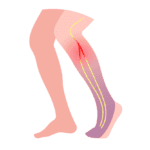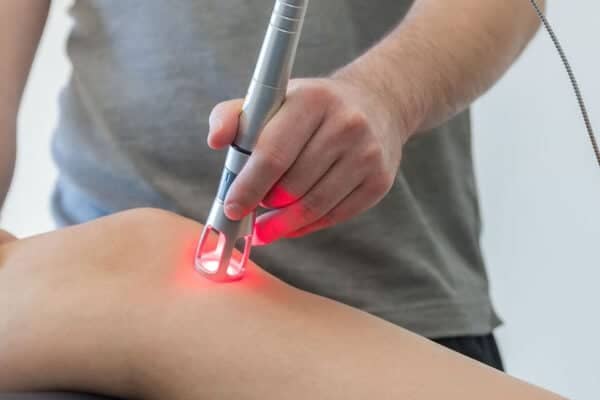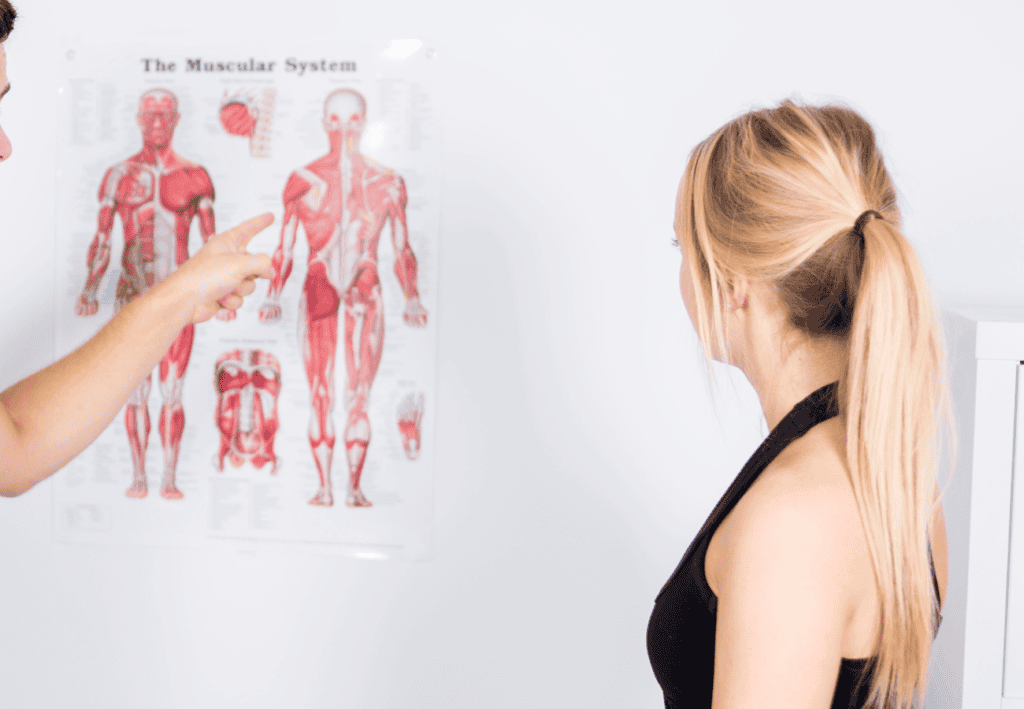


High intensity laser therapy (HILT) is the application of laser light at intensities above 500 mW in an attempt to treat musculoskeletal pain and soft tissue injury. High intensity laser emit light energy into tissue that penetrates deep to stimulate tissue regenerations, collagen production, and blood circulations. It speeds healing, reduces inflammation and relieves pain. High-Intensity Laser Therapy is most often used for chronic pain, soft tissue injuries, joint injuries, arthritis or tendinopathy. A laser of higher intensity than Low-Level Laser Therapy (LLLT) provides faster treatment time and deeper tissue penetration.
Laser therapy should be avoided by individuals who:
In the treatment of a large number of musculoskeletal conditions, high intensity laser therapy (HILT) has proven to be effective. High-Intensity Laser Therapy has been researched, including by way of a systematic review, that has demonstrated it can reduce pain, decrease inflammation and stimulate tissue healing. The device works by initiating cellular activity, promoting blood flow to a recovering tissue and aiding the repairing of damaged tissues. In general, High-Intensity Laser Therapy has been proven to treat tendinopathy, osteoarthritis, and chronic pain syndromes, in particular. High-Intensity Laser Therapy may be combined with other therapies, some of which therapeutic ultra sound, electrotherapy, therapeutic exercises, to improve functional outcomes and support full recovery. It’s not going to work in all conditions, and it won’t have the same effect in every individual.
High intensity laser therapy (HILT) is the application of laser light at intensities above 500 mW in an attempt to treat musculoskeletal pain and soft tissue injury. High intensity laser emit light energy into tissue that penetrates deep to stimulate tissue regenerations, collagen production, and blood circulations. It speeds healing, reduces inflammation and relieves pain. High-Intensity Laser Therapy is most often used for chronic pain, soft tissue injuries, joint disorders, and arthritis or tendinopathy. A laser of higher intensity than LLLT provides faster treatment time and deeper tissue penetration.
What are the side effects of high intensity laser therapy?
When administered by a trained professional High Intensity Laser Therapy (HILT) is considered generally safe. As with any medical treatment, you could experience side effects. These can include:
You need to follow professional guidance and use protective measure to reduce risk, but. Always see a healthcare provider before having high intensity laser therapy.
What is high intensity laser therapy used in physiotherapy?
Physiotherapy widely uses high intensity laser therapy (HILT) to treat musculoskeletal conditions and to promote healing. Its applications include:
High intensity laser therapy stimulates cellular activity, increases blood flow and promotes collagen production, which all contribute to tissue repair and recovery, which makes it a leading treatment in modern physiotherapy
Does high intensity laser have side effects?
Proper use of HILT is generally considered safe and has little side effects. But there is the risk, if used improperly or for inappropriate condition.
High power output high intensity laser therapy (HILT) penetrates deeper into tissues than low intensity laser therapy and is more effective as a treatment. Usually, it is done with lasers with a scope of control from 0.5 to 10 watts, with more concentrated, more forceful conveyance of vitality. This helps stimulate tissue repair, increases blood flow, reduces muscle spasms, and therefore this intensity helps reduce inflammation, alleviate pain and promotes cellular healing. High energy treatments treat deeper musculoskeletal conditions, including chronic pain, soft tissue injuries, and joint issues more effectively than low level lasers.

Are you ready to feel better? Our friendly physiotherapists in Nicosia can help you. We’ll create a special plan just for you.